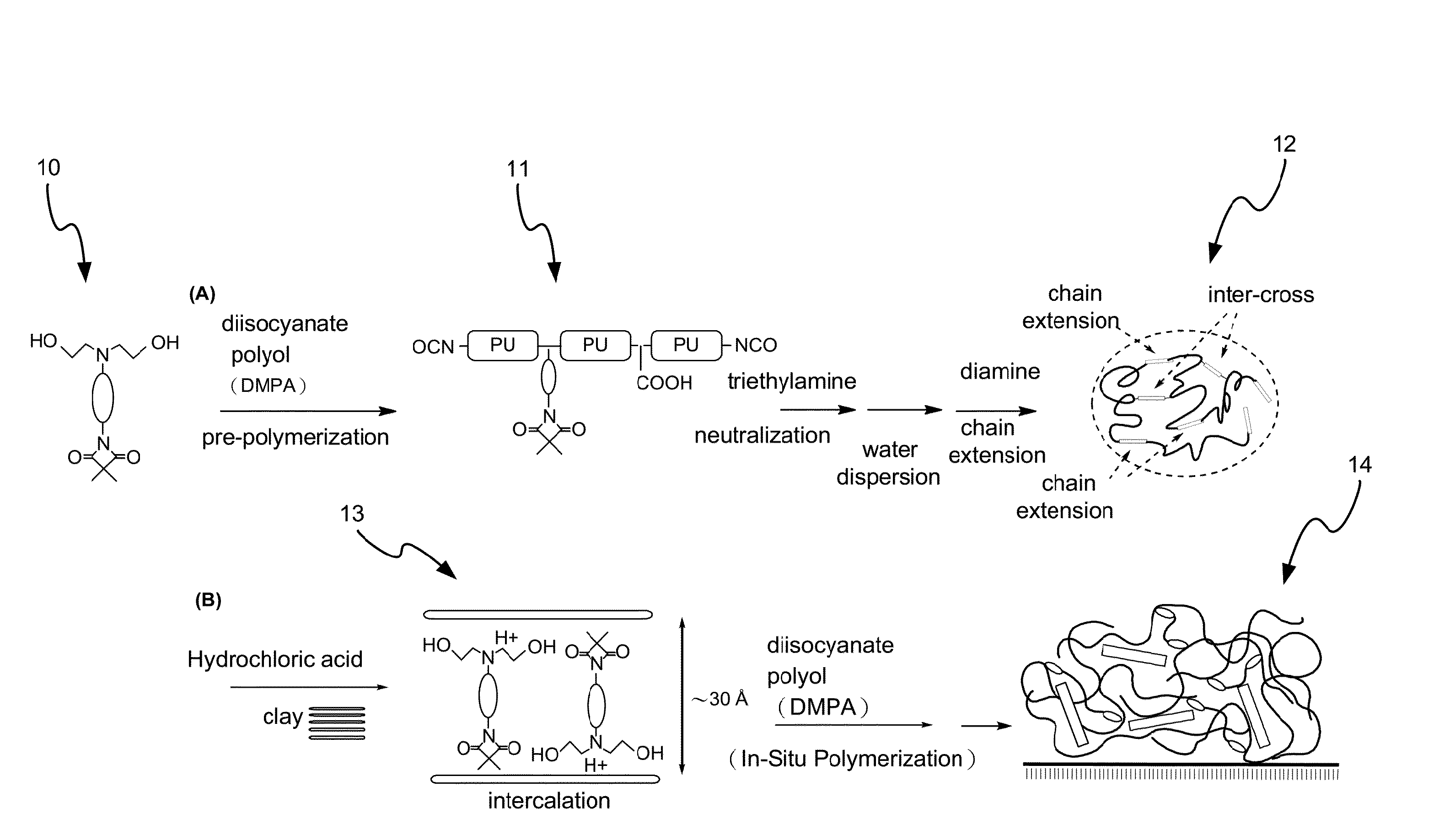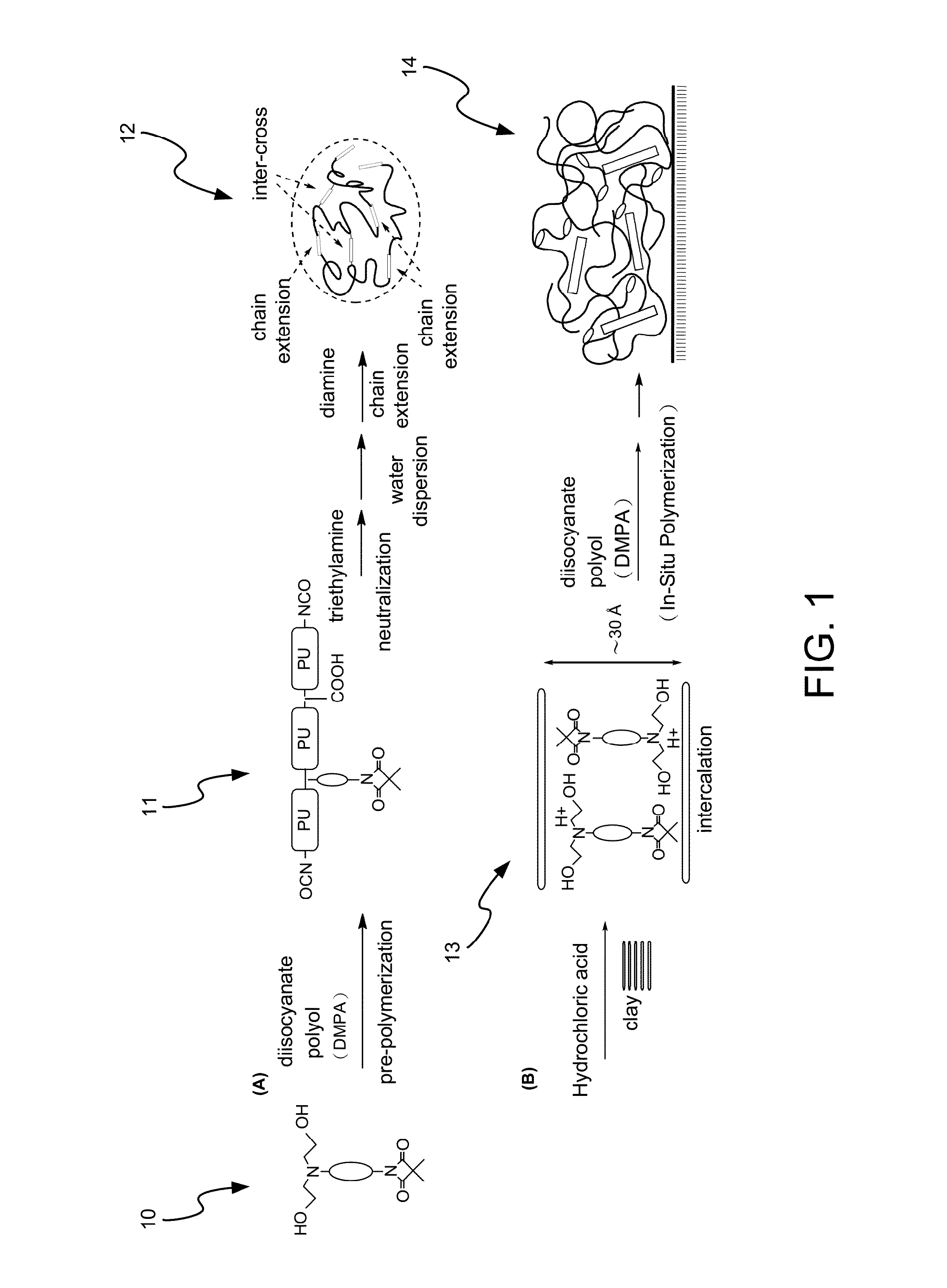Method for Making Waterborne Polyurethane with a Reactive Functional Group and a Nanocomposite Made of the Same
a functional group and waterborne polyurethane technology, applied in the field of waterborne polyurethane with a reactive functional group and a nanocomposite, can solve the problems of polluting the environment, high cost of compounds, and incompatible physical properties with solvents, and achieve enhanced physical properties and increased molecular weight.
- Summary
- Abstract
- Description
- Claims
- Application Information
AI Technical Summary
Benefits of technology
Problems solved by technology
Method used
Image
Examples
example 1
Short-Chain Diol compound I-1
[0061]Methylene di-p-phenyl diisocyanate (“MDI”) and isobutyryl chloride are dissolved in xylene and triethylamine (“TEA”) to provide a monomer, i.e., IDD (4-isocyanato-4′(3,3-dimethyl-2,4-dioxo-azetidino) diphenylmethane). The reaction is represented by the following chemical formula:
[0062]Then, 11.4 grams of IDD and 3 grams of diethanolamine (“DEA”) are dissolved in tetrahydrofuran (“THF”) at 0° C. for 3 to 4 hours to provide a dual-functional, short-chain diol compound I-1. For several times, cyclohexane is used to wash away excessive reactants and impurities so that a white solid is obtained, at a yield of 87%. The reaction is represented by the following chemical formula:
example 2
Short-Chain Diol compound I-2
[0063]11.4 grams of IDD and 4.5 grams of N-(3-Aminopropyl)diethanolamine, (“APDEA”) are dissolved in THF at 0° C. for 3 to 4 hours to make a dual-functional, short-chain diol compound I-2. For several times, cyclohexane is used to wash away excessive reactants and impurities to obtain a white solid at a yield of 85%. The reaction is represented by the following chemical formula:
example 3
Short-Chain Diol Compound I-3
[0064]IDD and DEA are used to make 10 grams of short-chain diol compound I-1. 1.72 grams of N-butyl amine (“C4H9NH2”) is used to execute ring-opening at the end of the short-chain diol compound I-1 to make short-chain diol compound I-3 without any reactive terminal group. For several times, cyclohexane is used to wash away excessive reactants and impurities so that a white solid is obtained, at a yield of 80%. The reaction is represented by the following chemical formula:
PUM
| Property | Measurement | Unit |
|---|---|---|
| zeta potential | aaaaa | aaaaa |
| size | aaaaa | aaaaa |
| hydrophilic | aaaaa | aaaaa |
Abstract
Description
Claims
Application Information
 Login to View More
Login to View More - R&D
- Intellectual Property
- Life Sciences
- Materials
- Tech Scout
- Unparalleled Data Quality
- Higher Quality Content
- 60% Fewer Hallucinations
Browse by: Latest US Patents, China's latest patents, Technical Efficacy Thesaurus, Application Domain, Technology Topic, Popular Technical Reports.
© 2025 PatSnap. All rights reserved.Legal|Privacy policy|Modern Slavery Act Transparency Statement|Sitemap|About US| Contact US: help@patsnap.com



